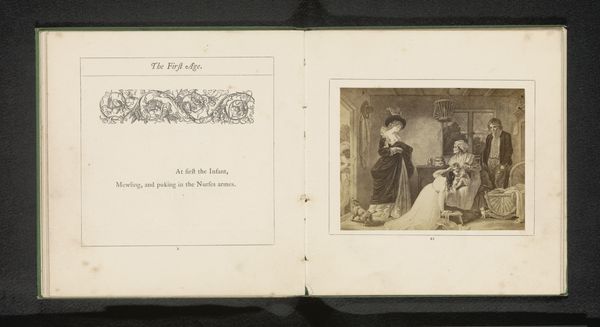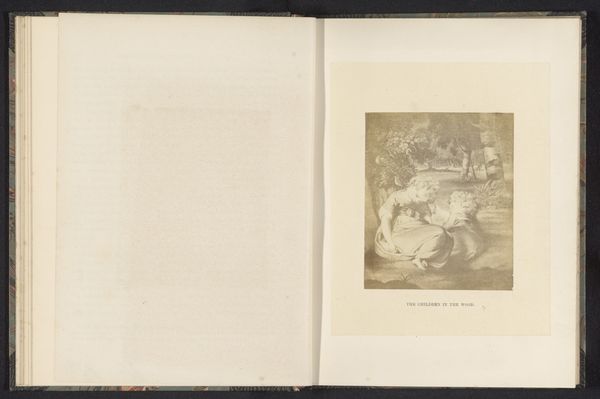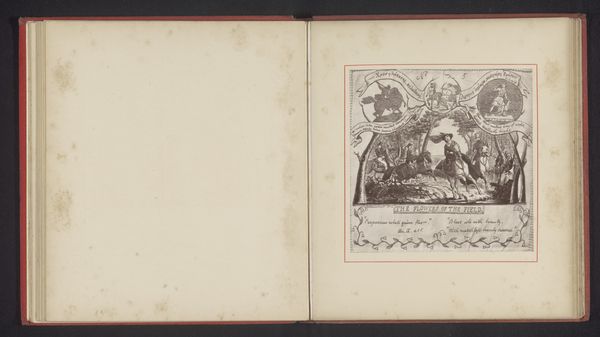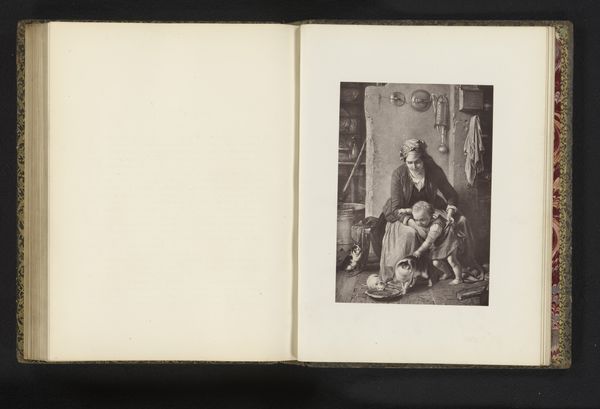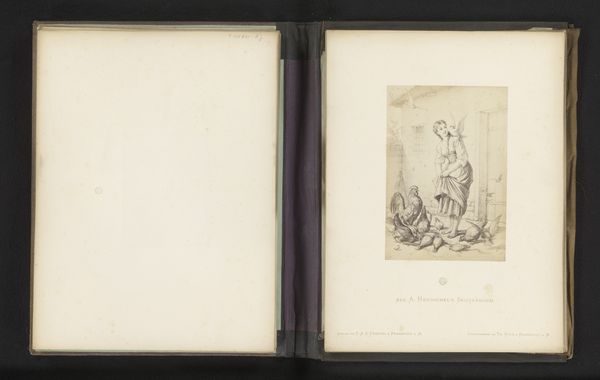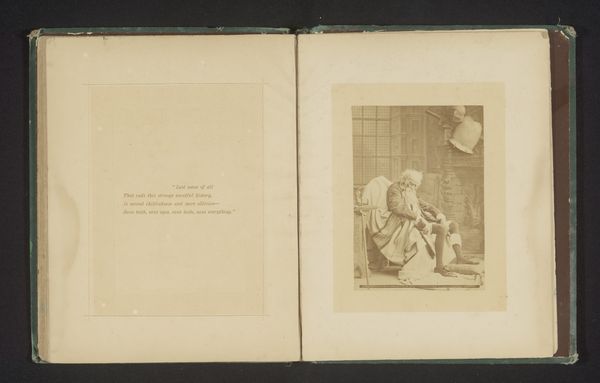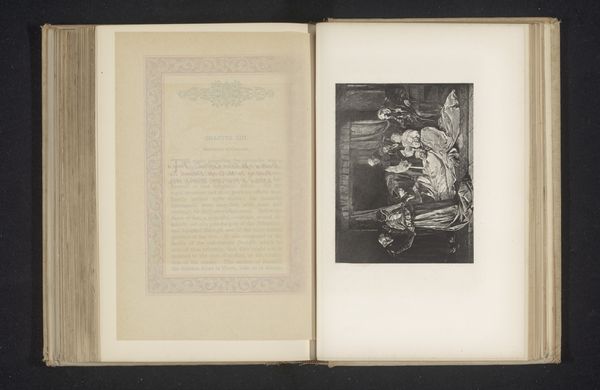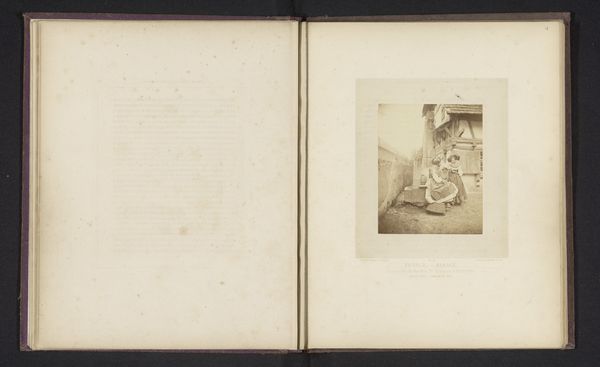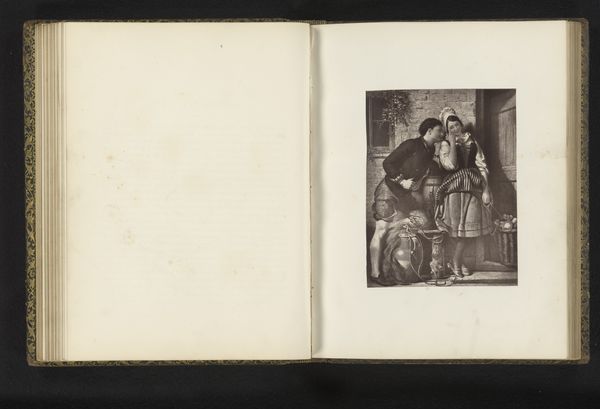
Fotoreproductie van een prent, voorstellende een oude man en een kind in een interieur before 1864
0:00
0:00
print, etching, paper, engraving
#
portrait
# print
#
etching
#
paper
#
genre-painting
#
paper medium
#
engraving
Dimensions: height 78 mm, width 98 mm
Copyright: Rijks Museum: Open Domain
Curator: Let’s take a look at this photomechanical print from before 1864, titled “Fotoreproductie van een prent, voorstellende een oude man en een kind in een interieur." Editor: It’s undeniably intimate. The muted tones create this atmosphere of quiet contemplation. The figures, huddled together, suggest a sense of vulnerability. It really makes you pause. Curator: Indeed. Considering the era and the subject matter – an old man and a child – it is compelling to explore this through a social lens. Images of ageing, especially in relation to youth, often reflect anxieties about dependency and the cycle of life. How do class dynamics, perhaps implicitly represented here, shape those relationships? Editor: I think there’s an interesting narrative around dependency and intergenerational power. How does the child's presence either reinforce or challenge the old man's status and his understanding of his own position in the family and society? The scene feels a bit melancholic. Does this touch upon societal attitudes towards ageing? Curator: Absolutely. The socio-political constructs around ageing are highly gendered. We could ask whether the old man might embody a symbolic weakening of traditional patriarchal structures? Also, how is his dependency juxtaposed against the backdrop of 19th century conceptions of masculinity and agency? How might race and cultural norms also impact such an image's reception and understanding of this exchange? Editor: It also triggers a thought on domesticity in that era. Consider the composition - a family, possibly caught in a mundane daily scenario. Yet the artist chose to capture this specific interaction. Why? To perhaps valorize those fleeting instances of love and affection amid the structured norms. Curator: Very insightful. I also note the artistic reproduction method employed. How did this choice affect the accessibility and perception of such imagery to broader audiences? The original might have had a whole different reading had it been exhibited as an original drawing, instead of this readily distributed format. Editor: Right, the move from the hand-crafted to the machine-produced carries layers of political and cultural meaning about the definition and access to “art”. Looking at art through various disciplines really makes us see and question established assumptions and norms. Curator: Precisely. By examining its history, creation, and reception, we can uncover and reflect on both contemporary society and ourselves. Editor: Yes. Context, interpretation, discussion; all vital to an art experience.
Comments
No comments
Be the first to comment and join the conversation on the ultimate creative platform.
